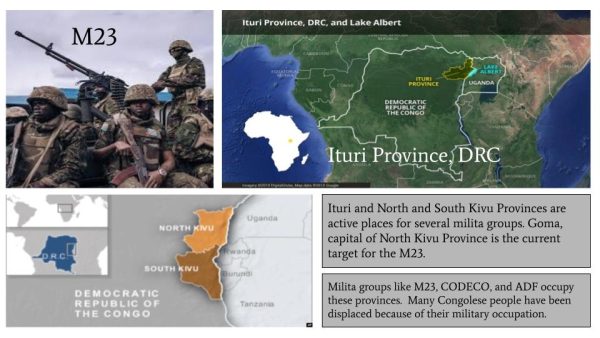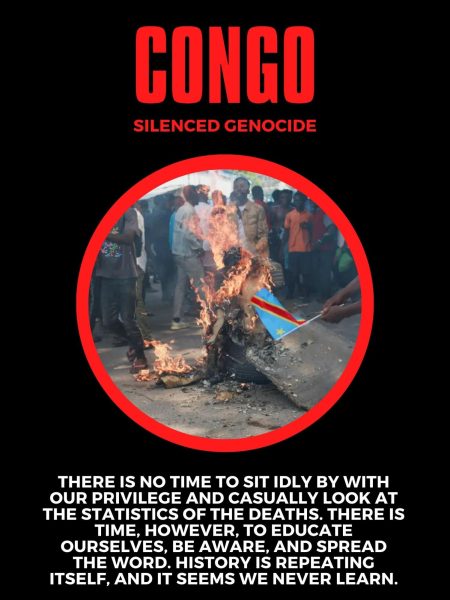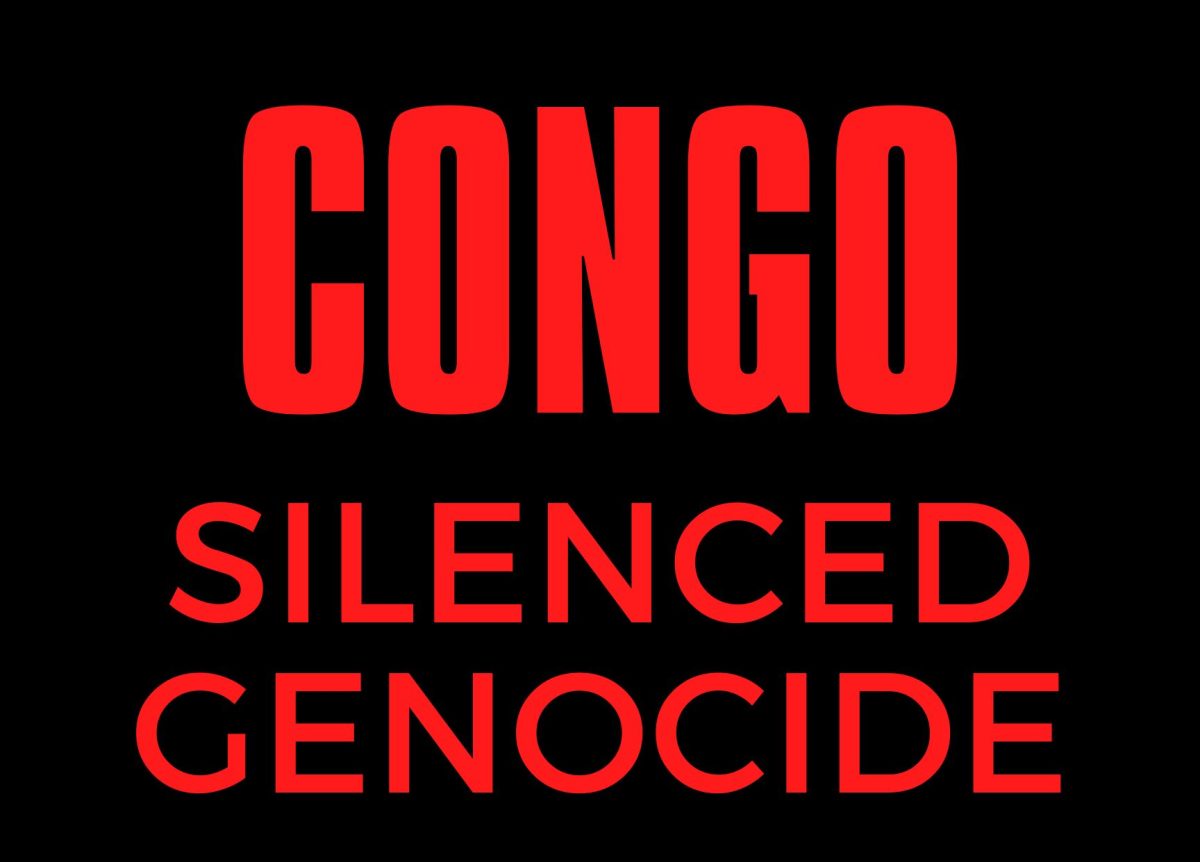Whether it be celebrities, the Met Gala, TikTok, or internet “sensations,” a multitude of news and events overshadowed the massacre of the Congolese people and the silent genocide in Congo.
Government Reforming
The current president of the Democratic Republic of Congo is Felix Tshisekedi, who has appointed a new prime minister, replacing its former president, Jean-Michel Sama Lukonde. The new prime minister, Judith Suminwa, is also the first prime minister to be a woman. Tshisekedi won re-election as president on December 20 after a long process checking logistics for the ballot due to the opposing side’s insistence on voting interference. Suminwa’s current prioritization as the new prime minister is to advocate and push for employment, women, and youth and to try to alleviate the effects of Congo’s security crisis and conflict. This means significant changes are happening within Congo’s government. It could drastically change the direction that the country is going in or continue in its decline. This will happen if the government cannot maintain control of its territories against mainly the March 23 Movement (M23) rebel group.

Timeline of Congo’s History
1960: The DRC obtained independence from the colonizing Belgium. Soon after, Prime Minister Patrice Lumumba was assassinated, resulting in Mobutu Sese Seko’s dictatorship for 30 years. This cycle continued, and his rule allowed others to exploit Congo for its valuable mineral resources like gold, copper, and diamonds. These are called blood minerals because of mineral smuggling and the indispensable access to minerals in eastern DRC. The name comes from the women and children raped, mutilated, and killed in the repulsive process of obtaining these minerals. To this day, corrupt companies from around the world and fighters in the war take advantage of Congo’s wars to get these minerals.
The 1994 Rwanda Genocide: Refugees from Rwanda, a neighboring country, flooded into Congo. This was a result of a multitude of ethnic wars within Rwanda. The Rwanda Genocide was the mass killing of Tutsis and moderate Hutus by extremist Hutu militias. In just a hundred days, around 800,000 to a million people died. This heavily affected other neighboring countries, where most refugees fled to avoid the fighting.
Congo’s first and second war (1996-2003): Refugees from Rwanda included armed fighters, which led to Uganda, Rwanda, and Angola’s invasion of the DRC for its Rwandan Hutu fighters.
1990-1999: CNDP was later rebranded as M23 and other rebel groups like the ADF and CODECO became active in the Ituri and North Kivu provinces to combat other armed countries that targeted their groups. UN intervention led to MONUSCO peacekeepers, which are now leaving Congo as of April.
2012-2022: Goma, the capital of North Kivu Province, located in the eastern region of the DRC, was seized by M23 but quickly defended with the help of UN peacekeepers. After remaining seemingly dormant, M23 carried out violent attacks in 2022. Currently, M23 is targeting the capital again. According to Al Jazeera journalist Shola Lawal, as of February 2024, M23 has seized at least four towns in North Kivu Province.
2023-2024: The EAC deployed troops failed to prevent M23 from seizing, and both the EAC and UN began to withdraw due to violent protests. More recently, in December, SAMIDRC troops were deployed to stop M23 advances. Presently, in 2024, M23 is advancing into Goma once again.
Rebel Militias in the DRC
There are many rebel militias within the DRC, and currently, there are about 120 to 140 of them. However, the most active groups are M23, ADF, and CODECO.
March 23 Movement (M23): Operates in North Kivu province. The rebel group’s majority is known to be ethnic Tutsis, who broke away from the Congolese army (FARDC). They justify their actions with a claim to fight for Tutsis’ rights in the DRC. Fighters also include former members of the National Congress for the Defense of the People (CNDP). M23 and several other rebel groups have conquered several territories within the DRC and are funded and supported allegedly by the governments of Rwanda and Uganda. Both countries deny any allegations. However, a 2023 UN Group of Experts report revealed Kigali’s (capital of Rwanda) funding to M23, which refutes Rwanda’s claim.
The Allied Democratic Forces (ADF) operate in eastern DRC, bordering Uganda, where they originate. During the First Congo War, they formed their group in 1996 by using Congo as their base and operated attacks on Uganda. The purpose of their fight is to defend an Islamic state in Uganda, where the population of Muslims is a minority. Although they remained silent in 2001, they have made their presence more aware by alleged connections with ISIL (ISIS).
The Cooperative for Development of the Congo (CODECO) operates in eastern Ituri and was formed during Congo’s second war in 1999. It was formerly an agricultural cooperative until they began to support the Lendu ethnic group. The Lendu ethnic group believed their rival, the Hema ethnic group, mistreated them. Since then, CODECO has attacked local civilians and Congolese forces. From February of this year, they have also killed 15 people after believing they were Hema. Currently, they have been targeting gold mines in the DRC. The Lendu are akin to Hutu, and the Hema are identifying with Tutsi, which is reflective of the foundation for the Rwanda Genocide. It shows the cycle always repeats.
Since the conflict in Congo in 1996, approximately 6 million people have been killed. About 7 million people have been displaced, most out of reach for aid. The humanitarian crisis in Congo is one of the worst in history, and many people are living in tents that cannot shield them from the bombs and unending fights. Recently, a bomb attack in one of eastern Congo’s displacement camps killed and injured several people. The death count is uncertain but estimated to be at least 12 deaths. The Rwandan army and M23 were accused of targeting displacement camps, specifically this one.
UN Peacekeepers are Leaving the Democratic Republic of Congo
The UN mission in Congo is called MONUSCO, and as of April 26, 2024, they have been closing key bases to prepare for their departure from the country. It is leaving because the government of Congo has requested their departure, a possibly devastating blow to the country’s defense against rebel forces. This is primarily due to the reforming government, which just re-elected its president in December. Their presence in the country for about two decades has come to an end, and MONUSCO’s support in repressing rebels like M23 has been deemed insignificant. The UN peacekeepers are not popular within the country, which is valid given that many civilians have felt little difference in security.

The majority of the UN peacekeeping force is Pakistani. They make up about 100,000 of South Kivu province’s peacekeeping force. Around 2,000 UN soldiers were scheduled to leave South Kivu before the end of April, leaving MONUSCO down to 11,500 soldiers. 14 UN bases are going to be taken over by the Congolese government, and even a recently deployed African regional force has been requested to leave as well. The mission of MONUSCO is one of the most expensive and extensive in UN peacekeeping history. According to United Nations Peacekeeping, its 2022 budget consisted of 1.1 billion dollars and has 12,379 troops and 5,000 additional civilian personnel. Many civilians are left helpless as violent riots kill their loved ones and the UN peacekeepers. The UN Security Council voted on their departure from the DRC after deciding their presence may result in more instability and security issues.
There are a variety of outcomes from the conflict in Congo, but there is only one necessary goal: peace. As rebel militia groups conquer and occupy territories in the DRC, civilians are constantly victims of their military authority. Their situation is overlooked and needs to be considered in the same gravity as Palestine’s genocide. Just like Palestine and Israel, this war or conflict is over land. Without any interference to get the Congolese people the help and aid they need, they will continue to be killed, raped, pillaged, and starved.


